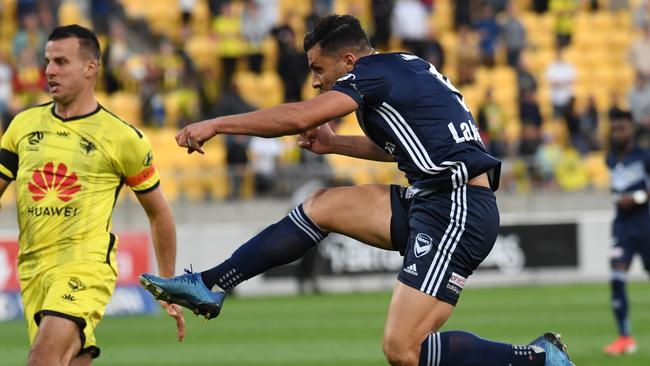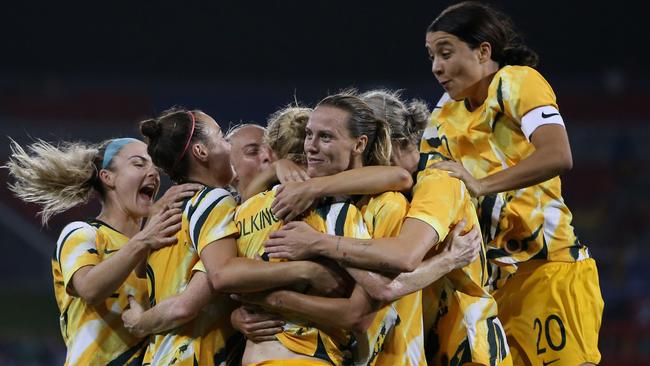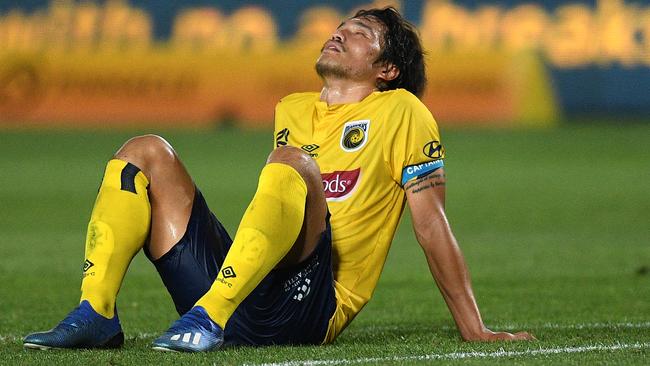David Davutovic: Australian football right back to where it was in 2002 as future looks fragile at best
Football in Australia was on life support when David Davutovic joined the media in 2002. Eighteen years later in his final article for News Corp Australia, he laments on the code being under enormous pressure again.

A-League
Don't miss out on the headlines from A-League. Followed categories will be added to My News.
The Socceroos and Matildas are among Australia’s most iconic sporting brands. Pandemic-proof.
But the coronavirus will change Australian football and Federal Government assistance — if not intervention — may be required again.
The National Soccer League and federation were on life support when I joined the media in 2002.
Watch sport on Kayo. Anywhere. Anytime. Just $25/month, cancel anytime. New to Kayo? Get your 14-day free trial & start streaming instantly >

The most radical change in Australian football history ensued when Prime Minister John Howard intervened.
The Crawford Report lured Frank Lowy back into the game, giving birth to Football Federation Australia and the A-League.
But the code is under pressure again and a faltering A-League and W-League would have savage consequences for national teams, placing future World Cup qualification in jeopardy for the Socceroos, and killing off the Matildas’ dreams of becoming world champions.
The A-League is at its most fragile since starting in 2005, with Perth Glory, Central Coast Mariners and Western Sydney standing down players and staff without pay. The W-League is at greater risk.
The A-League needs an independent board — a la the AFL Commission — capable of placing the game’s greater interests at the heart of decisions.
The owners are collectively scrambling, tip-toeing around a web that includes FFA (and vice-versa), self-interest, contractual obligations with Fox Sports and now COVID-19.

A civil war could erupt.
Yet FFA, A-League clubs, the players’ union — which played critical roles in 2002 with $700,000, 18-month research laying the foundations for the A-League — have the collective nous and solutions. If they cooperate.
This takes leadership, which must come from FFA.
Everything in the game must be reviewed, including the state federations’ role. It’s not so much a perfect chance to recalibrate, as a necessity.
It’s a perfect chance to reset if incumbents want out.
Tony Sage has tipped millions in over the journey, but if he can’t afford it, willing and able replacements should be sought. Perth Glory is not Sage’s hobby horse, but a proud club with 24 years history.

Serious consideration should be given to Central Coast’s future, including relegation to the NPL or relocation.
Beyond crisis management and belt-tightening, the game must not contract.
A reason the game is in a much worse position than the AFL and NRL is its failure to evolve.
The answer is to grow or die. Reopen the expansion process to everyone and increase to 16 teams (it’ll be 12 next season) as soon as possible.
But there must be far more modest financial obligations.
Australian football’s rich history must be acknowledged. State league and former NSL clubs must be given a chance to join the A-League, either directly or via a second division.

That shouldn’t rule out new franchises.
A second-tier and expansion appear way off at this stage, but the game will suffer if we don’t make a move on both issues.
Over 750,000 kids play football, making it Australia’s No.1 junior participation sport. They need pathways attached to dreams.
Football’s status quo would challenge the world’s best administrators. This is one almighty test for new FFA chief executive James Johnson.
Self-interest and a lack of leadership have plagued the game in recent years.
This period will be the defining moment for Johnson, chairman Chris Nikou and his FFA board.
This is my final column for the Herald Sun. Farewell, it has been my pleasure covering the world game for you.
Originally published as David Davutovic: Australian football right back to where it was in 2002 as future looks fragile at best
